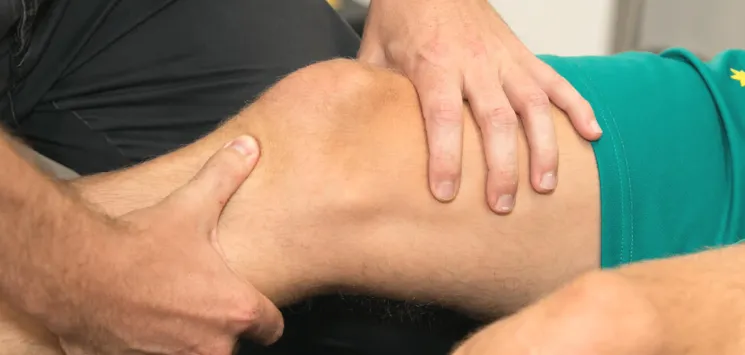
Epidemiology (sports)
- · Knee injuries are commonly seen in most sports along with everyday life due to their role as a weight-bearing joint.
- · The knee is made up of 4 bones along with multiple ligaments and muscle attachments
- · Acute knee injuries are often seen in sports involving impact and cutting-type activities such as rugby, soccer, netball, and hockey
- · Overuse injuries are often also seen at the knee joint and are usually more related to endurance-type activities such as running and cycling.
Mechanism of injury
Acute and chronic injuries are both very common at the knee joint and are often linked to the type of sport or activity being performed. The mechanism of injury will play a large role in diagnosing the structures involved. In acute knee injuries, there are several ways the knee can sustain an injury, such as:
- Pivoting motion – ACL, MCL, meniscus
- – Direct force to the knee – PCL, patella fracture
- – Twisting under force – meniscus
- – Direct force to the leg/foot – MCL, LCL injuries
The knee can also sustain overuse/chronic injuries such as:
- – ITB pain – running, cycling
- – Tendinopathy – running and jumping sports
- – Patellofemoral pain – running, general sports
- – Stress injuries
Key assessments required
- A thorough assessment is often required for the knee joint due to the number of structures that can be injured
- · A lot of information about the injured structure can be taken from a subjective assessment involving questions about how the injury occurred and what movements and activities increase or decrease the pain
- · The assessment will also involve a number of hands-on tests performed by the physiotherapist but may also include imaging such as MRI or X-ray if a more sinister injury is suspected such as fracture or ligament rupture.
It is also possible to experience pain at the knee joint which is referred from another structure such as the hip or lower back and can also occur due to poor function at the foot and ankle hence why a thorough assessment is important to determine the root cause of the pain
Evidence-based treatment/management required
Your physiotherapist will be able to guide you as to whether your injury can be managed by physiotherapy and conservative management or whether you will need a further referral, for example, input from an orthopaedic surgeon.
- · This should be discussed early during your rehabilitation program for acute injuries
- · Other injuries may require a period of de-loading or activity modification to allow optimal healing
- · Prognosis for knee injuries varies greatly depending on the structure involved.
- · Ligament injuries could require 1-3 weeks for a mild grade injury and up to 12 months of rehabilitation for injuries such as an ACL rupture.
- · Most injuries are more easily managed when assessed early for optimum rehabilitation with an evidence-based approach
 Helping the Central Coast Feel Well, Move Well and Perform Well!
Helping the Central Coast Feel Well, Move Well and Perform Well!